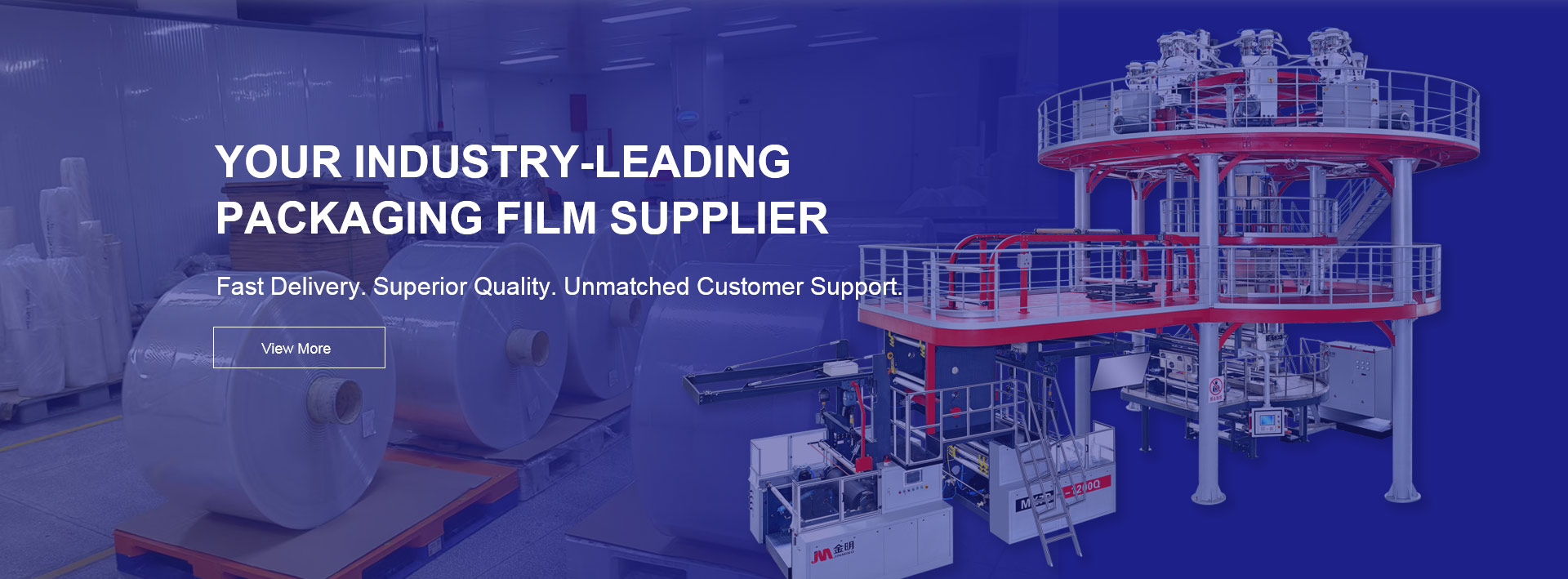
Understanding the right thickness for food-packaging films is crucial for ensuring product protection, cost-efficiency, and sustainability. In this article we explore typical thickness ranges for flexible food-packaging films, what drives those ranges, how to select appropriate thicknesses.
Film thickness is commonly measured in microns (µm) or mils (1 mil ≈ 25.4 µm). According to industry guidance:
For lamination films or general food/FMCG films: typically 8 µm to 20 µm.
For vacuum-bag style films: around 70 µm to 150 µm.
For high-strength flexible pouches (mono-material PE/PP structures) the thickness often runs 80 µm to 120 µm or more.
A useful definition: according to the ASTM International standard D883-23 a “film” is less than 0.25 mm (250 µm) thick, separating films from sheets.
Putting these together, for typical food-packaging flexible films one might see thicknesses ranging from ≈ 8 µm to around 150 µm, with many common packaging applications lying in the 20 µm-100 µm range depending on barrier, strength and format.
Here is a simple table summarising common ranges:
| Application type | Typical thickness range |
|---|---|
| Lightweight retail film / shrink-wrap | ~8 µm – ~20 µm |
| Medium duty flexible pouch / bag | ~50 µm – ~100 µm |
| Heavy duty, vacuum or high barrier film | ~70 µm – ~150 µm (or more) |
Selecting the “right” thickness is not about choosing the thickest film possible, but balancing performance, cost and sustainability. Important factors include:
Heavier or sharp-edged products (for example bones in meat, frozen crystalline edges) demand higher puncture resistance and thus thicker or specially structured films.
Products with long shelf life, sensitive to oxygen or moisture (e.g. seafood, high-value meats) require barrier layers; sometimes thickness is increased or more layers added to meet barrier specs.
Retail items where clarity and cost are more important than extreme durability may use thinner films.
Deep-draw thermoforming bottom webs require sufficient thickness to avoid thinning, tearing or leak risks.
Lidding films may be thinner but still need to meet seal integrity, clarity and peel strength targets.
Hand-packing vs high-speed automation may have different machine tolerance for film thickness, uniformity and runnability.
Oxygen Transmission Rate (OTR) and Moisture Vapor Transmission Rate (MVTR) are influenced by film structure, layer composition and thickness. Thicker films or multi-layer structures can reduce permeability.
For mono-material recyclable films, sometimes slightly thicker gauges (e.g. 100-120 µm) are chosen to deliver required performance while maintaining recyclability.
Every extra micron adds material cost, shipping weight, environmental impact.
Thinner films, if engineered correctly (with multi-layer or reinforcement) may deliver equivalent performance at lower material usage.
Packaging engineers must avoid simply specifying “thicker is better” without analyzing end-use, machine compatibility and lifecycle impact.
Here are suggested steps when defining a film for food packaging:
Define product + pack format: weight, sharp edges, frozen or ambient, shelf life, barrier needs, transparency, printability.
Choose film structure: single layer vs multi-layer; barrier layers (EVOH, PA, metallised) vs standard PE/PP.
Select target thickness: based on mechanical strength needed, forming depth (if thermoformed), barrier performance required, machine compatibility and cost.
Validate thickness uniformity and tolerance: a typical tolerance might be ±5 % of nominal thickness.
Test performance: puncture/tear tests, OTR/MVTR, seal strength, forming draw ratio, clarity/print quality.
Balance cost vs performance vs sustainability: review whether a slightly lower thickness film can deliver required performance via advanced materials or enhanced structure.
When seeking a reliable partner for flexible food-packaging films, one company worth considering is JINBORUN New Material Technology Co., Ltd. Located in Guangdong Province, China, JINBORUN specialises in co-extrusion barrier food films and vacuum bags for the food industry. Their capabilities include multi-layer water-quench blown film machines and custom packaging solutions. They serve multiple food segments including meat, seafood, sausage and vegetable packaging. Their emphasis on quality, customisation and food-industry focus makes them a viable partner for overseas procurement.
Film thickness in food-packaging applications typically falls into a range from 8 µm to ~150 µm, depending on film format, barrier and strength requirements. Selecting the correct thickness demands a balance of product needs, processing conditions, barrier performance, cost and sustainability. Working with a specialised supplier like JINBORUN can help tailor film structure and thickness to your specific needs.